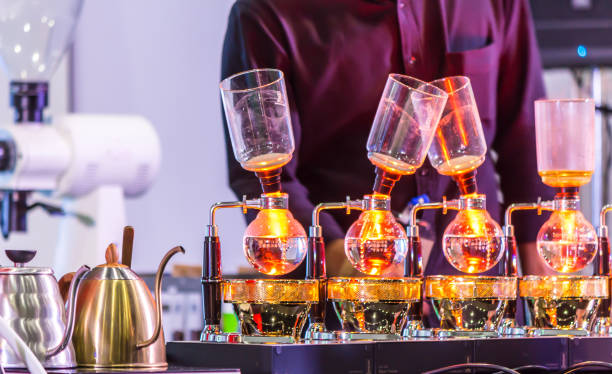Systems used in many industries could benefit from new surface treatments.
A wide variety of industrial processes include most electricity generation plants. Many chemical production systems and cooling systems for electronics all have a crucial step that involves the boiling of water.
They could reduce their energy consumption by increasing the efficiency of heat- and water-evaporating systems. MIT researchers now have a method to achieve this feat, using a special surface treatment for these materials.
The increased efficiency can be attributed to three different types of surface modifications at different sizes. Youngs Song Ph.D. ’21, Ford Professor in Engineering Evelyn Wang and four other MIT students published their findings in the Advanced Materials journal. Scientists caution that the initial findings are still at a laboratory scale and that more work is needed to create an industrial-scale process.
Two key parameters that define the boiling process are the heat transfer coefficient (HTC) and the critical heat flux. In materials design, there is a tradeoff between these two parameters. Anything that improves one tends to make it worse. Both are essential for efficiency. Scientists have now combined different textures to improve the material’s surface. This was after years of hard work.
Song states that both parameters are important but that combining them can be tricky because there are intrinsic tradeoffs. For example, too many bubbles on a boiling surface can cause boiling to be very efficient. However, too many bubbles can merge, forming a vapor layer over the boiling surface. This film creates resistance to heat transfer from hot surfaces to the water. Song says that vapor between the water’s surface and the water reduces heat transfer efficiency and lowers CHF values.
The Song is currently a postdoctoral researcher at Lawrence Berkeley National Laboratory. Much of this research was part of Song’s doctoral thesis at MIT. Although the components of his new surface treatment have been studied before, Song is now a postdoctoral researcher at a href= “https://scitechdaily.com/tag/lawrence-berkeley-national-laboratory/”>Lawrence Berkeley National Laboratory. Much of this research was done as part of his doctoral thesis work at MIT. Researchers created a 10-micrometer wide array of dents separated by approximately 2 millimeters. This was done to prevent the formation of a film. However, this separation can also reduce the number of bubbles on the surface, decreasing the boiling efficiency. The team created a nanometer-scale surface treatment that creates tiny bumps and edges at the nanometer scale. This increases the surface area and encourages evaporation beneath the bubbles.
These cavities were created in the center of a series of pillars located on the material’s surface. Combining these pillars with nanostructures promotes wicking liquid from their bases to their tops. This increases the boiling process because more surface area can be exposed to water. Song states that the three “tiers”, the cavity separation, posts and nanoscale texturing, all contribute to a significantly improved efficiency in the boiling process.
He says that microcavities are the place where bubbles rise. “But we can separate those cavities by 2 mm to reduce the coalescence of bubbles.” The nanostructures also promote evaporation beneath the bubbles. The pillars induce capillary action to supply liquid to the bubble base. This maintains a layer of liquid water between the boiling surface of the vapor and the bubbles of the vapor, which increases the heat flux.
Wang says that although their research has shown that these types of surface treatments can be combined to achieve desired results, it was done in small-scale laboratory conditions that were difficult to scale up to practical applications. She says that the structures she’s making were not intended to be scaled up in their current form but were created to demonstrate that such a system is possible. The next step is to discover alternative methods to create these types of surface textures so that these methods can be scaled to more practical dimensions.
She says, “Showing that it is possible to control the surface in such a way as to obtain enhancement is the first stage.” The next step is to look at more scalable methods. For example, although the pillars created in these experiments were made using clean-room techniques commonly used for producing semiconductor chips, other less laborious ways to create such structures such as electrodeposition. You can also make the nanostructure textures on the surface in various ways, some of which are more easily scaleable.
This process could be used in small-scale applications. One example is the thermal management of the electronic device. This area is growing more important as smaller semiconductor devices become more efficient and heat output increases. Wang states that there is a place where this is very important.
These applications may take some time to develop, as thermal management systems for electronics typically use liquids other than water. These liquids have different surface properties and surface tensions than water, so it would be necessary to adjust the surface features accordingly. Wang states that the next step in the ongoing research is to address these differences.
Song suggests that the same multiscale structuring technique can be used for different liquids. The dimensions could be adjusted to accommodate the different properties of different liquids. He says that these details can be altered, and that could be our next step.
